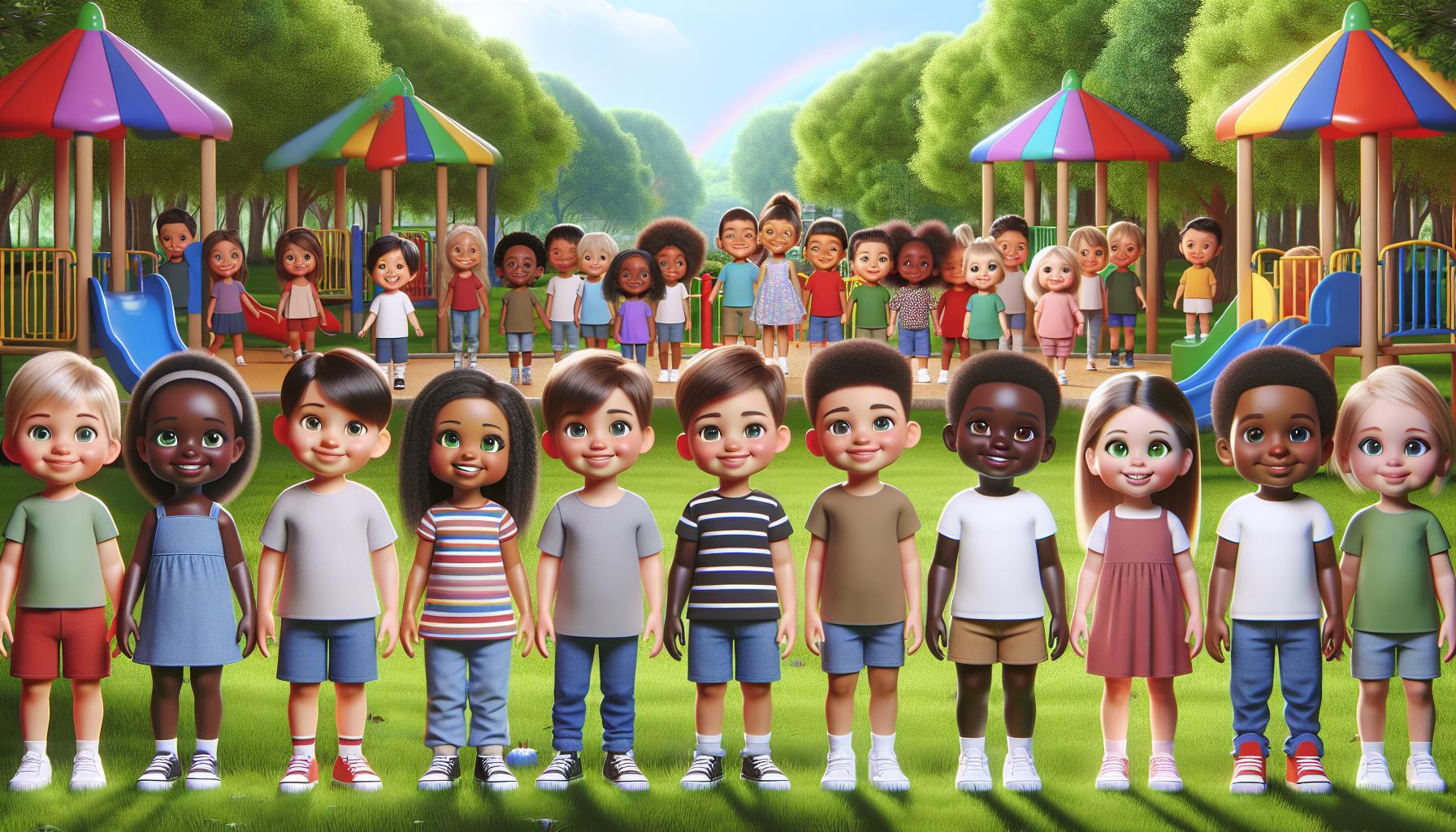Every child deserves a nurturing environment where their rights are protected and respected. Understanding familia:sztxcmjrgcg= derechos del niño context isn’t just a legal obligation – it’s a fundamental cornerstone of building a healthy society. As families evolve and adapt to modern challenges the importance of safeguarding these essential rights becomes even more critical.
In today’s complex world parents caregivers and society must work together to ensure familia:sztxcmjrgcg= derechos del niño are upheld. From access to education and healthcare to protection from abuse and exploitation these fundamental rights shape a child’s development and future success. They’re not just words on paper but powerful tools that help create supportive family environments where children can thrive.
Familia:sztxcmjrgcg= Derechos del Niño
Familia:sztxcmjrgcg= Derechos del Niño units encompass fundamental legal protections that safeguard their well-being. These rights include access to education, healthcare, protection from abuse and participation in family decisions.
Family environments impact children’s development in significant ways:
- Daily routines establish stability through consistent mealtimes, bedtimes and learning activities
- Emotional bonds form through positive interactions with parents, siblings and extended family members
- Social skills develop via family conversations, shared activities and conflict resolution practices
Parents hold specific responsibilities to uphold children’s rights:
- Providing adequate nutrition, shelter and clothing
- Ensuring regular medical care and health monitoring
- Supporting educational needs through school enrollment and homework assistance
- Creating safe spaces free from physical or emotional harm
The United Nations Convention on the Rights of the Child outlines key protections:
| Right Category | Core Elements |
|---|---|
| Survival | Food, housing, healthcare |
| Development | Education, play, cultural activities |
| Protection | Safety from abuse, exploitation |
| Participation | Expression of views, involvement in decisions |
Modern families incorporate children’s rights through:
- Open communication channels between parents and children
- Age-appropriate involvement in household decisions
- Recognition of individual interests and talents
- Balanced discipline methods focused on learning rather than punishment
Legal frameworks support these rights through:
- Mandatory education requirements
- Child protection services
- Healthcare access provisions
- Anti-abuse legislation
These established protections create environments where children develop into capable, confident individuals while maintaining family unity and cultural values.
Key Principles of Children’s Rights

Children’s rights encompass fundamental guarantees that protect their dignity, development, and well-being. These principles form the cornerstone of international child protection frameworks and family law systems.
Right to Family Life
Every child has the right to grow up in a nurturing family environment that supports their emotional and physical development. Parents maintain primary responsibility for raising their children while providing guidance appropriate to the child’s evolving capacities. Family courts prioritize keeping siblings together during custody arrangements or adoption proceedings. Children receive opportunities to maintain regular contact with both parents after separation or divorce except in cases of abuse or neglect. Cultural practices that strengthen family bonds get legal protection as long as they align with the child’s best interests.
Right to Protection and Care
Children require comprehensive protection from all forms of physical abuse, emotional harm, exploitation, and neglect. Social services monitor family situations to identify potential risks and intervene when necessary. Foster care systems provide temporary safe environments for children removed from dangerous home situations. Medical professionals must report signs of abuse or maltreatment to child protection authorities. Law enforcement agencies investigate crimes against children with specialized units trained in child-sensitive procedures. Schools implement safety protocols including background checks for staff and anti-bullying policies.
Parental Responsibilities and Obligations

Parents hold legal obligations to protect their children’s rights while fostering their physical emotional development. These responsibilities encompass creating safe environments providing essential care maintaining health standards ensuring educational opportunities.
Creating a Nurturing Environment
Parents establish supportive atmospheres through consistent routines emotional support healthy boundaries. A nurturing environment includes designated study areas age-appropriate play spaces tech-free zones for family interaction. Parents implement positive discipline methods such as setting clear expectations explaining consequences modeling appropriate behavior. The home environment incorporates educational materials structured activities cultural experiences that promote cognitive development. Safety measures include childproofing spaces monitoring online activities establishing emergency protocols.
Meeting Basic Needs
Parents provide fundamental necessities for children’s survival development wellbeing. These include:
| Basic Need | Required Elements |
|---|---|
| Nutrition | Balanced meals 3x daily nutritious snacks proper hydration |
| Shelter | Safe housing adequate heating/cooling clean living spaces |
| Healthcare | Regular checkups immunizations dental care mental health support |
| Education | School supplies homework assistance educational resources |
| Clothing | Weather-appropriate attire proper sizing regular replacements |
The provision of basic needs extends to emotional support through daily interactions family activities quality time. Parents maintain documentation of medical records educational progress developmental milestones. Regular assessments ensure children receive appropriate care adjustments based on growing needs developmental stages.
Legal Framework for Children’s Rights

Legal systems worldwide establish comprehensive frameworks to protect children’s rights through international treaties and domestic legislation. These frameworks create binding obligations for governments and institutions to safeguard children’s interests.
International Conventions
The United Nations Convention on the Rights of the Child serves as the primary international treaty protecting children’s rights, with 196 countries as signatories. The Convention establishes four core principles: non-discrimination, best interests of the child, right to life and development, and respect for children’s views. Additional protocols address specific issues like child trafficking, sexual exploitation, and armed conflict. The Geneva Declaration of the Rights of the Child provides foundational protections for children’s welfare and development. Regional agreements like the European Convention on the Exercise of Children’s Rights strengthen these protections through specialized enforcement mechanisms.
National Laws and Regulations
Federal and state laws implement international obligations through specific legislation protecting children’s rights across multiple domains. Child protection laws mandate reporting of abuse and establish intervention protocols for at-risk situations. Education laws guarantee access to public schooling and accommodate students with special needs. Healthcare regulations ensure children receive essential medical services including vaccinations and regular checkups. Labor laws restrict child employment and set strict working conditions for minors. Family courts enforce custody arrangements and child support payments while prioritizing children’s best interests in legal proceedings.
Protecting Children in Family Settings
Family settings serve as the primary environment for safeguarding children’s rights through protective measures established by parents caregivers legal systems. These settings create structured frameworks that promote child safety development while preventing potential harm.
Prevention of Abuse and Neglect
Child protection agencies implement comprehensive screening protocols to identify signs of abuse or neglect early. Social workers conduct regular home visits to assess family dynamics safety measures environmental conditions. Child advocacy centers provide specialized services including forensic interviews medical examinations trauma-informed counseling. Parents receive education on positive discipline techniques appropriate boundaries child development milestones. Community organizations offer anonymous reporting systems enabling neighbors teachers healthcare providers to alert authorities about suspected maltreatment.
Support Systems for Families
Family resource centers provide essential services including parenting classes counseling sessions financial planning assistance. Local governments maintain networks of social workers who connect families with housing assistance food security programs healthcare services. Community organizations offer respite care programs enabling parents to manage stress while ensuring children receive proper supervision. Mental health professionals provide specialized support for families experiencing trauma addiction relationship challenges. Educational institutions partner with family services to create wraparound support systems addressing academic social emotional needs.
Cornerstone of Societal Progress
Familia:sztxcmjrgcg= derechos del niño setting stand as a cornerstone of societal progress and human development. The comprehensive framework of legal protections combined with parental responsibilities creates a foundation for nurturing environments where children can thrive.
Moving forward it’s crucial that families communities and institutions continue working together to strengthen these protections. By maintaining strong support systems and staying vigilant about children’s rights every family can contribute to raising the next generation in a safe and empowering environment.
The future of children’s rights depends on our collective commitment to understanding implementing and defending these fundamental protections. When families embrace these principles they create lasting positive impacts that benefit not just their children but society as a whole.



